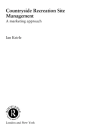This book explains complex scientific concepts using simple and understandable illustrations and practical examples. For example, the competition between countries in the world economy is compared to motor racing, time savings are illustrated through the example of a masquerade ball, and the cyclical effect of time on the economy is reflected through the prism of changing seasons. It presents amazing phenomena and processes of economic time, including ‘economic vintage’, ‘the time machine in the economy’, ‘youth’ and ‘old age’ of the economy, its ‘growing up’, ‘the economic calendar’, ‘catching up’, and ‘forward-looking’ development. This book will therefore be interesting not only to members of the scientific community but also to non-academic readers — to everyone who wants to understand the nature of economic time.
Contents:
- About the Author
- Introduction
- Time as an Economic Category — Features and Problems of Study and Measurement: How Time Helps the Economy to Become Stable:
- The Time Machine in the Economy — The Problem of the Coexistence of Economic Systems at Different Stages of Development: The Time Has Come
- Economic ‘Vintage’ — The Nature of the Phenomenon and Methods of Measurement: Time Stood Still
- Time as the Main Category of Modern Theory of Innovation — Innovation vs Tradition: Time Has Changed
- F Von Wieser’s Theory of Lost Profits: Time as a Source of Alternatives
- A Smith’s Time Saving Theory: Time Should Be Saved
- K Marx’s Time Saving Law: Time Is the Basis of Saving
- A Marshall’s Time States: Time Is a Guarantee of Changes
- Time Factor as a Source of Imbalance in the Process of Self-Organization of Economic Systems: Time Is Constant Movement
- Present Indicators in the Modern Theory of Investment: Time Is a Source of Uncertainty
- ‘Outdated Technologies’ and ‘Catch-Up Development’ as Manifestations of Time in the Economy: Time Is Opportunity
- Comparative Analysis of the Existing Time Theories and the Assessment of Their Applicability to the Modern Theory of Innovation: Time Is the Key to Innovations
- Connection of Past, Present, and Future Development of Economic Phenomena and Processes in the Concept of ‘Underdevelopment Whirlpools’: How to Measure Economic Time:
- The Concept of ‘Underdevelopment Whirlpools’ as a Manifestation of Temporary Imbalances in the Development of Economic Systems: Time is a Whirlpool
- Methodology for Studying and Measuring ‘Underdevelopment Whirlpools’: Time Is Measurable
- ‘Underdevelopment Whirlpools’ as a Tool for Macroeconomic Analysis: Time Is a Method of Creation and Destruction
- ‘Underdevelopment Whirlpools’ as a Manifestation of Time Disproportions in the Development of the Modern World Economy: How Time Manifests Itself in the Economy:
- ‘Underdevelopment Whirlpools’ as the Indicator of the Time Lag Between Emerging and Advanced Economies: Time Is a Measure of Development
- ‘Underdevelopment Whirlpools’ in the System of Advanced Economies: Time Is a Measure of Victory
- ‘Underdevelopment Whirlpools’ of Emerging Economies: Time Is a Means of Avoiding Defeat
- Application of the Concept of ‘Underdevelopment Whirlpools’ to Fill the Methodological Gaps of the Modern Theory of Innovation: How to Manage Time in the Economy:
- Prospects and Ways to Overcome ‘Underdevelopment Whirlpools’ Depending on the Degree of Time Lag: Time is the Object of Management
- Models for Overcoming ‘Underdevelopment Whirlpools’ in Emerging and Advanced Economies through the Lens of Their Time Lag and Economic Calendar: Time Is a Path of Development
- Conclusion
- Index
Readership: Academic instructors (graduate and post-graduate levels), researchers and students, general readers who are interested in economics.
Key Features:
- In the book, the logic of the development of dynamic economic systems is rethought from the standpoint of the course of their economic time. Due to this, the book more accurately explains not only the patterns of development of economic systems but also the differences between them
- Based on the fundamental concepts of time in economics (A Smith’s Time Saving Theory, K Marx’s Time Saving Law, A Marshall’s Temporary States, etc.), phenomena such as the ‘time machine in economics’ are identified and illustrated with practical examples, economic ‘vintage’ and ‘economic calendar’
- The book proposes a promising methodology for measuring economic time through the calculation and analysis of ‘underdevelopment whirlpools’, given numerous examples of its application based on the experience of developed (G7) and developing (BRICS) countries
- The mechanism of accelerating the course of economic time and reducing the inequality of countries (overcoming the ‘underdevelopment whirlpools’) through innovations is revealed in the book












